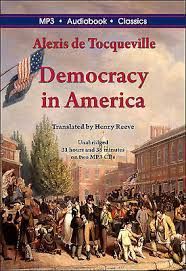Peter Drucker on Social Ecology, Balancing Change and Continuity, and Building a Functioning Society
PUBLISHED:
Towards the latter part of the 20th century and beginning of the 21st century, Peter F. Drucker became known as the guru of management and as ‘the man who invented management’ (BusinessWeek, 2005). Ever since his “The Concept of the Corporation” (1945), where he examined General Motors, Drucker focused his writings on the structure and internal dynamics of organizations. He spent decades studying the way people work, and the ways managers manage. Drucker also examined how people work under different contexts and environments. For several years, his works primarily focused on private sector organizations, their management practices, programs, and performance.
Over time, however, Drucker seems to have transformed from a management author and consultant into a social ecologist. In his “Management: Tasks, Responsibilities, Practices” (1973), we can see Drucker’s emphasis on managerial tasks, managerial work, managerial tools, managerial responsibilities, and the role of top management, across all organizations, including nonprofits. Some years later Drucker would write “Managing in Turbulent Times” (1980), where he reveals his concern for the future of business, the economy, and society.
Drucker’s works became increasingly permeated with examples of matters surrounding society at large. Drucker would later write “Innovation and Entrepreneurship” (1985), where he advised all organizations, including public-service institutions, to become entrepreneurial in order to survive and prosper in a market economy. Years later, Drucker explained: “My interest in, and concern for, community, society, and polity, goes back a very long time, all the way back to 1927 and 1928.” (Drucker, 2003).
Perhaps one of Drucker’s greatest strengths was his ability to observe the environment that surrounded him. He possessed an uncanny ability to see things that others had not recognized, and to focus on details that many overlooked. Joseph Maciariello, Emeritus Professor of Social Science and Management at the Drucker School of Management, and who collaborated with Drucker on many publications, writes: “One of the most important duties of the social ecologist for Drucker is to identify major trends that have already emerged in the nub but have not yet made their impact felt on the institutions of society.” (Maciariello, 2005).
Drucker believed that freedom and dignity were imperative to building effective organizations in modern society. And he expressed his recognition of these principles. Drucker’s “The Frontiers of Management” (1986) and “The New Realities” (1989) highlighted that changes in society are inevitable, and thus, we must realize that change represents opportunity. Rather than perceiving change as an inconvenience, we should treat it as an opportunity to grow and develop. Moreover, Drucker advises all of us to focus on what to do today in reflection of tomorrow. A few years later, Drucker reveals the focal points of his work. Drucker writes: “Finally there is one continuing theme, from my earliest to my latest book: the freedom, the dignity, the status of the person in modern society, the role and function of organization as instrument of human achievement, human growth and human fulfillment, and the need of the individual for both, society and community.” (Drucker, 1992)
Drucker focused many of his writings on improving society as a whole, and fostering the common good. Drucker writes: “But what I learned from Toennies — and never forgot — is the need for both, a community in which the individual has status, and a society in which the individual has function.” (Drucker, 2003) This particular excerpt embodies the roots of Drucker’s philosophy of management as a liberal art (MLA).
One can observe Drucker’s own transformation by examining his initial works which focus on for-profit organizations to later writings which converged on topics surrounding communities and society. Drucker writes: “I consider myself a social ecologist concerned with man’s man-made environment the way the natural ecologist studies the biological environment.” (Drucker, 1992) In some of his writings, Drucker explains that he perceives himself as a social ecologist who recognizes change and continuity. Drucker states: “Social ecology is a practice. Its aim is to maintain the balance between continuity and conservation on the one hand, and change and innovation on the other.” (Drucker, 1992) Drucker adds: “Fundamental to the discipline of social ecology…is the belief in responsibility, in authority grounded incompetence, and in compassion.” (Drucker, 1992) Drucker emphasizes these points because he argues that in order for society to improve as a whole, we must look at our existences (lives) as being inter-related, inter-connected. Drucker posits that if organizations and individuals strive toward maintaining the balance between continuity and change, society will benefit.
Drucker explains to us that his work as a social ecologist also evolved over time and that he realized that environmental conditions were changing. Drucker states: “In working on this book I began to realize that totally new — indeed unprecedented — social institutions were rapidly evolving…” (Drucker, 2003) A couple of years later, Drucker tells us: “Our society has become, within an incredibly short fifty years, a society of institutions…” (Maciariello, 2005) These reflections seem to reveal that Drucker acknowledges that he was examining society as if he were an ecologist examining an ecosystem. Drucker writes: “And it soon became obvious to me that work is a central factor in shaping and molding society, social order, and community.” (Drucker, 1992)
Drucker changed as the world that he observed around him was changing. In an attempt to better discern and explain the changes affecting society, Drucker asked poignant questions such as: “But this conclusion then led me to ask: what will, what can take the place of the ‘organic’ community of Toennies’ rural society? What can again integrate individual, community and society in an Industrial Age?” (Drucker, 2003) Drucker’s ability to ask questions and observe patterns allowed him to discern changes in organizations and society.
One of Drucker’s integral concepts is that of a Functioning Society. Central to this visionary concept is the notion that freedom, dignity, and equal opportunity can provide conditions for individuals to find meaning and purpose in their lives, and in turn, individuals will be able to contribute towards the betterment of communities and society. Drucker explains: “Corporations and other businesses are the wealth-producing institutions of society. Without these private sector institutions, our public sector and social sector institutions would not have the resources to function. It is the private sector that provides the resources to fund social and public sector institutions.” (Maciariello, 2005) However, Drucker also realized the importance of other institutions’ role in society. He writes: “The work of society is carried out through different kinds of organizations, each with its own tasks. Three diverse kinds of organizations make up the society of organizations. First there are public sector organizations…then there are private sector organizations…and finally there are social sector organizations.” (Maciariello, 2005)
Drucker was undoubtedly a social ecologist as he was not only examining organisms in the ecosystem (society), but also tracking the relationship amongst organisms (public sector, social sector, and private sector) within the ecosystem (society). Drucker offers this observation: “Each institution is an organ of society. And no organ can survive the body it serves.” (Maciariello, 2005) Drucker shares his understanding and perception of society as a body, and society’s institutions as organs that help sustain the body (society).
The work of a social ecologist involves observing relationships between organisms, explaining what those relationships are, and conceiving ways to improve those relationships. Drucker attempts to improve our understanding of society and the relationships between its organizations by offering some insight. Drucker writes: “Government commands; it tries to obtain compliance. Business supplies; it tries to get paid. The nonprofit institutions however are human-change agents.” (Drucker, 1992) Drucker not only understood the relationship between organisms (government, business, and nonprofit), but also tried to explain to us what their roles in society ought to be. Drucker believed that nonprofit organizations would provide human beings with those items that were not produced by either the public or private sector. Consequently, Drucker suggested that in order to meet the needs of individuals in the future, a nonprofit organization must adopt and embrace change, as it is the way to predict the future. Drucker states: “The most effective way to manage change successfully is to create it. The enterprise has to become a change agent.” (Drucker, 2001)
Drucker also believed that organizations (organisms) within society (ecosystem) must focus on what they do best. Maciariello writes: “Drucker believes that for a society to function well, its organizations should be single-purpose institutions….as a result, each organization, whether for-profit or nonprofit, should focus on a single task.” (Maciariello, 2005) It would appear that as Drucker observed society as if it were an ecosystem, he realized that every organism has a role and function to serve within such an ecosystem. Thus, Drucker suggested that each organism seek to do what it is best at doing. Hence, Drucker firmly believed that companies and individuals must build and focus on their strengths.
Also important to Drucker was the notion that social ecology is an important and necessary discipline that must be employed to better understand and improve society. Drucker writes: “But also social ecology as a discipline deals with action.” (Drucker, 1992) Drucker argues that one must take action and regard social ecology as a practice. Maciariello, who collaborated with Drucker, adds: “A principal goal of a social ecologist is to help promote continuity in the conserving institutions of society, while advancing change in the inherently destabilizing institutions of a free society.” (Maciariello, 2005) Furthermore, Maciariello explains: “Knowledge workers must become accustomed to the process of creative destruction. They must become change leaders, active in the pursuit of change.” (Maciariello, 2005) Drucker argued that we must understand our environment and observe what is changing or has changed, as change is a constant in the knowledge society.
Ecology is defined as the scientific study of relationships of organisms to one another and to their environment. Furthermore, a biotic community is one where all populations of living organisms, in a given area, interact and interconnect. Drucker studied society as if it were an ecosystem where biotic communities (biomes) are interconnected by physical, biological, and chemical processes. As such, one could argue that society sustains itself through processes similar to photosynthesis, energy flow through food chains, and recycling of nutrients. Just like a biological ecosystem, society contains organisms (organizations) that are capable of carrying on photosynthesis, and thus is able to convert light into organic material. Similarly, organizations are able to produce energy that helps sustain the ecosystem (society).
One can also draw a parallel between society and the human body. A human being is composed of a complex, highly integrated system of cells. Cells specialize and serve a specific purpose. Thus, when an aggregate of similarly differentiated cells merge, they form a tissue. Living tissue is made up of molecules which would never be able to assume the proper structure if energy were not supplied to maintain this level of organization. It is important to understand how cells (humans) obtain their energy and are able to maintain their configuration and sustain life. This is a crucial point as it may help explain and define our role and influence on society.
A cell is comprised of structural parts: cell membrane, nucleus, and cytoplasm. Similarly, human beings are also made up of structural parts: emotional, physical, intellectual, and spiritual. It is important to think of the complexity of humans (cells) when studying society (human body). For instance, a human being may be able to perform effectively if she or he carries a high level of protoplasm (knowledge), which allows her or him to continually carry on dynamic biochemical processes. There are individuals whose “mitochondria” may not contain the same ability to break down glycogen and glucose into water and carbon dioxide, and thus form energy. All individuals are different, just as cells are different. The important point is that when cells (humans) are aggregated, they form a human body (society). Comparatively, when organisms (organizations) are aggregated, they form an ecosystem.
Throughout his body of work Drucker reminds us to identify major trends that have already emerged, but have not yet made an impact on the institutions of society. One can look around and realize that the world continues to change rapidly. While there are continuous emerging technologies aimed at addressing social challenges, we must evaluate what needs to change, and what we ought to maintain. Innovation and technology alone cannot remedy many of the social issues we currently face.
Humans must work together to improve their interactions and relationships while helping to build a society that functions more effectively. It is in the best interest of society that we do so. We should collectively look to build common good and to do so by improving our organizations. We must learn to manage people effectively while giving them an opportunity to develop their full potential. We must nurture freedom and dignity. Thirty years from now, our ecosystem (society) will have changed, and we will need each other as much as we do today. As Drucker once wrote: “No organ can survive the body it serves”.
References
- Denning, S. (2013). The Founder of 21st Century Management: Peter Drucker. Forbes.
- Drucker, P. F. (Ed.). (2003). A Functioning Society: Selections from Sixty-five Years of Writing on Community, Society, and Polity. Transaction Publishers.
- Drucker, P. F. (1973). Management: Tasks, Responsibilities, Practices. Harper Collins, New York, New York
- Drucker, P. F. (1980). Managing in Turbulent Times. Harper Business. New York, New York
- Drucker, P. F. (1992). Reflections of a Social Ecologist. Society, 29(4), 57–64.
- Drucker, P. F. (1986). The Frontiers of Management. EP Dutton. New York, New York
- Drucker, P. F. (1989). The New Realities: In Government and Politics, In Economics and Business. Society and World View. Boston, Massachusetts.
- Drucker, P. F. (2001). The Next Society. The Economist.
- Editor, (2005). The Man Who Invented Management. Business Week, 28, 102.
- Maciariello, J. A. (2005). Peter F. Drucker on a Functioning Society. Leader to Leader, 37, 26–34.





